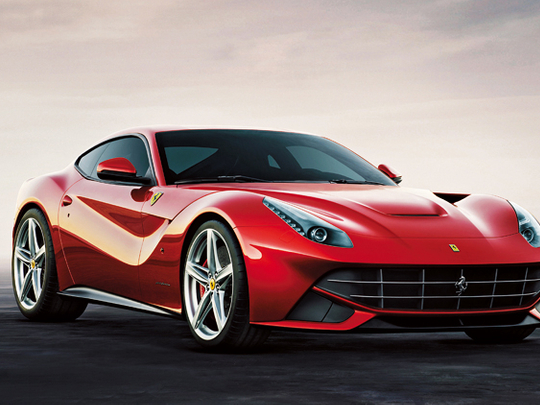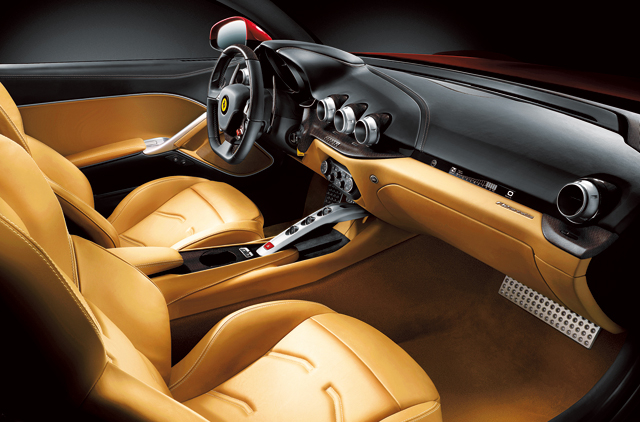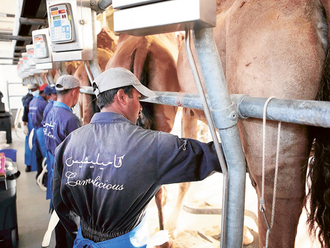
Even though Enzo famously said Ferrari road cars are immaterial products of his Maranello abode, existing only so spoiled buyers can fund his company's racing efforts, the story is far different today. Ferrari is now a carmaker, that also happens to have an F1 racing team. Fiat, the owner, isn't daft.
And when we're talking about Ferrari road cars, the uninformed might jump the gun and immediately visualise mid-engined bruisers in the shape of the volume-selling 458 Italia, and its ‘bread-and-butter' predecessors such as the 430, 360, 355, and so on down the line.
But the uninformed are just that. Ferrari's blood flows through 12 cylinders, all of them sitting up front, and not behind the driver. Remember that Enzo also famously said that the horse should always be in front of the carriage, not behind it.
The firm's storied history is now ready to begin a new chapter in front-engined V12 supercars, and it's called the F12 Berlinetta. And no, F12 isn't just a volume-up key on your Mac; it also signifies Ferrari and 12 cylinders, while the Italian word Berlinetta has always denoted a 2+2 coupé.
As for the Prancing Horse's history, you better believe that when we look back one day, the F12 Berlinetta will indicate the beginning of a new era. This car is the fastest road-going Ferrari ever. It houses a new engine, a Pininfarina design penned with input from Ferrari's own Styling Centre, ground-breaking construction and aerodynamics, and unprecedented performance for a 2+2.
The F12 Berlinetta's 6.3-litre 65-degree V12 engine revs to 8,700rpm, producing just over 116bhp per litre. Don't give yourself a headache: that equates to a total of 730 horsepower, from a naturally aspirated engine that also reaches a peak torque output of 690Nm, 80 per cent of which is available from 2,500rpm. To reach such an outstanding specific power output, you'd think a Ferrari F12 Berlinetta has its own private ozone hole following it around everywhere. But in fact Maranello managed to reduce CO2 emissions as well as fuel consumption, the latter by 30 per cent.
To further improve the new F12 Berlinetta's efficiency, Ferrari also used an all-new spaceframe chassis designed by Scaglietti, using 12 different kinds of alloys, which resulted in an increase of 20 per cent in rigidity, while reducing weight by 70kg over the 599 predecessor, for a total of 1,525kg. Despite the engine being located in the front, it's actually mounted well behind the front axle, and the dual-clutch transaxle gearbox ensures a weight distribution favouring the rear: 46:54 per cent.
Compared to the 599, the new F12 Berlinetta has a shorter wheelbase, while the engine, dash and seats sit lower down. Ferrari says this has significantly benefited the new car's centre of gravity. Extensive high-tech computational fluid dynamics simulations were used in combination with wind-tunnel testing to boost the F12's downforce by 76 per cent, which means you get 123kg of downforce at 200kph. This hasn't added drag, as the F12 Berlinetta boasts a drag coefficient of 0.299. Ferrari managed these improvements with something called an Aero Bridge which uses the bonnet to generate downforce by directing air away from the upper part of the car. Maranello also added Active Brake Cooling, which opens guide vanes to the brake-cooling ducts only when necessary, like when you're hitting illegal speeds.
Not that the brakes can't handle a bit of abuse. They're Ferrari's latest generation carbon-ceramic items, while the suspension uses an evolved magnetorheological system.
The massive improvements and advancements made with the F12 Berlinetta have resulted in a car that laps Ferrari's Fiorano test circuit faster than the Enzo and 458 Italia, in 1:23 seconds. Zero to 100kph takes 3.1 seconds and doubling that will take an extra 5.4 seconds. Ferrari isn't giving away the exact top speed, but claims it's over 340kph. We guess that gives us a challenge when we drive the car next year.












